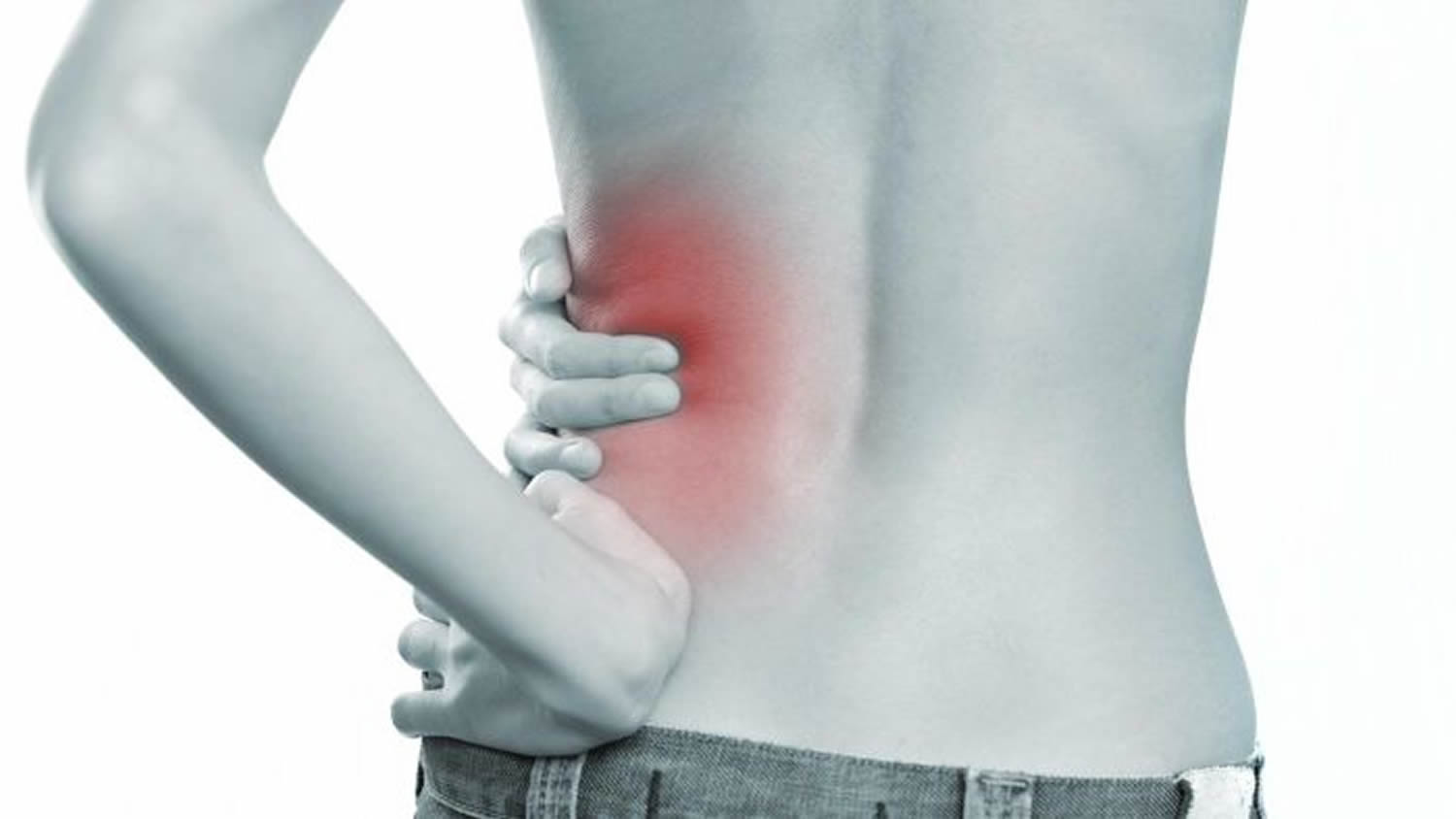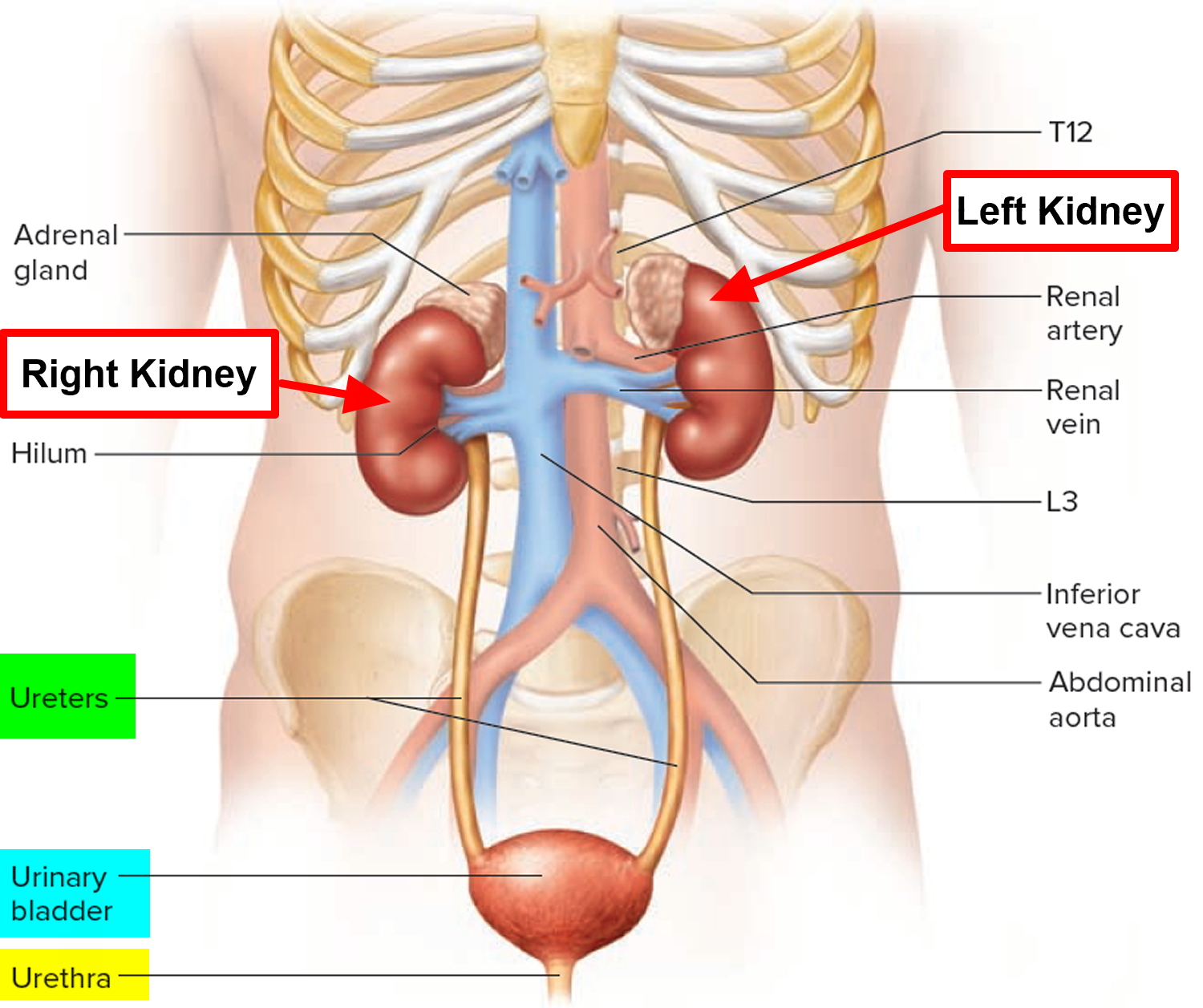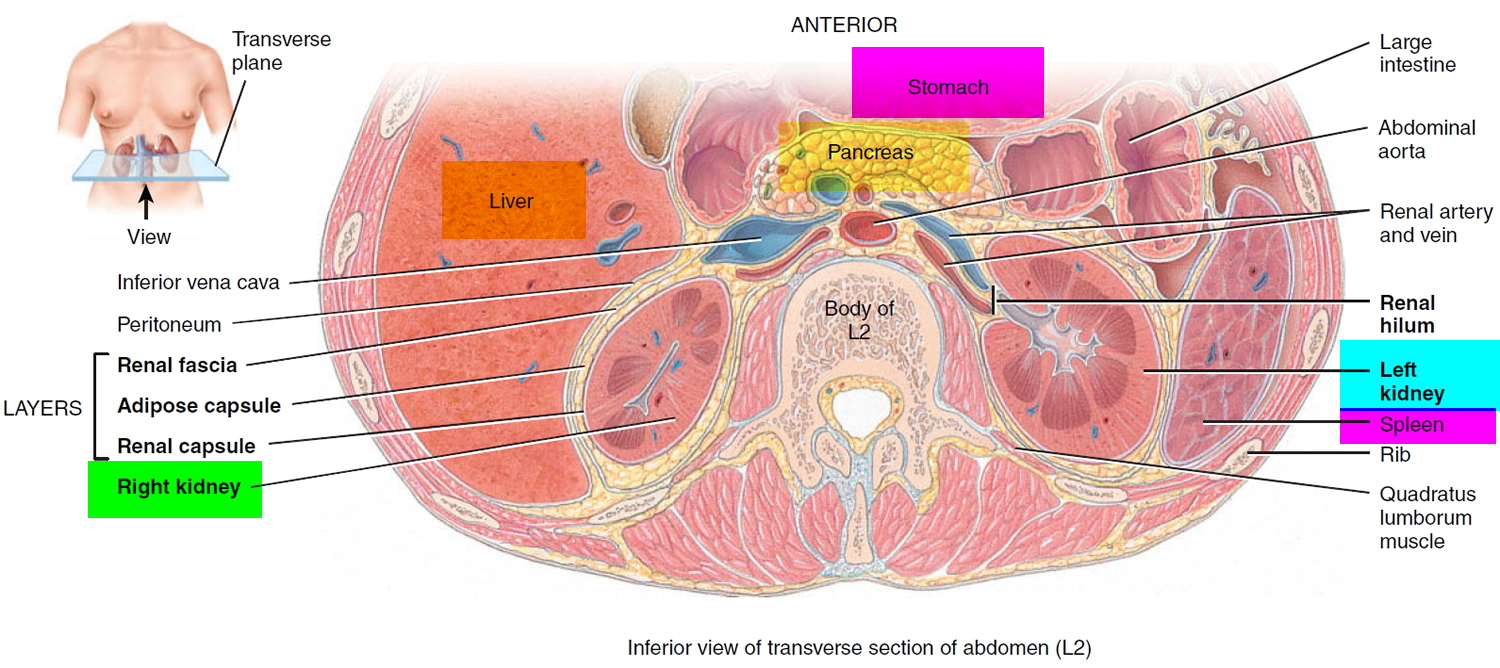Contents
Kidney pain
Pain in your kidney area can be caused by many different problems. If you have pain in your kidney area, please see your doctor.
The pain may be a sign of kidney infection, a kidney stone or something else completely.
What is kidney pain
Kidney pain, or renal pain, is usually felt in your back (under the ribs, to the right or left of the spine). It can spread to other areas, like the sides, abdomen or groin.
Kidney pain location
You have two kidneys that are located just above the waist between the levels of the last thoracic vertebrae T12 and third lumbar (L3) vertebrae, a position where they are partially protected by ribs 11 and 12. If these lower ribs are fractured, they can puncture the kidneys and cause significant, even life-threatening damage. The right kidney is slightly lower than the left (see Figure 1) because the liver occupies considerable space on the right side superior to the kidney.
Figure 1. Kidney location
Figure 2. Kidney location (transverse section)
What causes kidney pain
Your Kidneys drain urine to the bladder via tubes called ureters. Your bladder is emptied via the urethra. Problems in any of these areas can cause pain, and may be caused by:
- Kidney stones
- Kidney infection
- Other types of kidney disease.
Back pain due to muscle problems is usually in your lower back. Pain due to kidney problems is usually deeper and higher in your back, under your ribs. Signs that it is a kidney problem can also include fever, vomiting, pain in your sides or painful urination.
Pain around your kidneys can also be caused by other problems too, such as:
- Problems with your spine or ribs
- Muscle pain
- Pneumonia: Pneumonia is an infection of the lungs.
- Problem with your spleen or your liver
- A hernia. A hernia occurs when tissues or organs bulge through a weak point in the wall of the abdomen (belly muscles).
Kidney pain diagnosis
To diagnose pain in your kidney area, your doctor will talk to you and examine you. You may also be asked to have:
- blood test
- urine tests
- an ultrasound.
Differential Diagnosis of Kidney Pain
| Clinical clues | Suggested diagnoses | |
|---|---|---|
Dysuria (painful urination) | Urinary tract infection, interstitial cystitis (pelvic pain syndrome), vaginitis, prostatitis | |
Fevers, chills | Nonspecific response to infection or inflammation | |
Frequency | High fluid intake, urinary tract infection, bladder spasms, benign prostatic hyperplasia, hyperglycemia | |
Hematuria (blood in urine) | Kidney stones, uroepithelial or prostatic tumors, urinary tract infection, renal glomerular disease | |
Nausea, vomiting | Nonspecific response to pain, intestinal or urinary obstruction, gastrointestinal disease | |
Pain and tenderness | ||
Abdominal | Kidney stones, gastrointestinal disease | |
Flank | Kidney stones, musculoskeletal inflammation or spasm, referred pain from gallbladder (on right side), pyelonephritis | |
Groin or pelvic | Kidney or bladder stones, urethritis, prostatitis, vaginitis, pelvic inflammatory disease, pelvic pain syndrome | |
Kidney pain treatment
Treatment depends on the cause, the severity of the pain and how sick you are feeling.
You may find the pain eases with simple treatments like paracetamol. Talk to your doctor and your pharmacist.
If you have pain that you are worried may be caused by a kidney problem, please see your doctor.
You should also see your doctor if you have a pain in the back along with any of the following:
- discolored urine, painful urination or blood in your urine
- feeling that you need to urinate urgently
- a temperature
- the appearance of gravel (small kidney stones) in your urine
- feeling unwell.
- Treatment and Prevention of Kidney Stones: An Update. Am Fam Physician. 2011 Dec 1;84(11):1234-1242. http://www.aafp.org/afp/2011/1201/p1234.html[↩]







